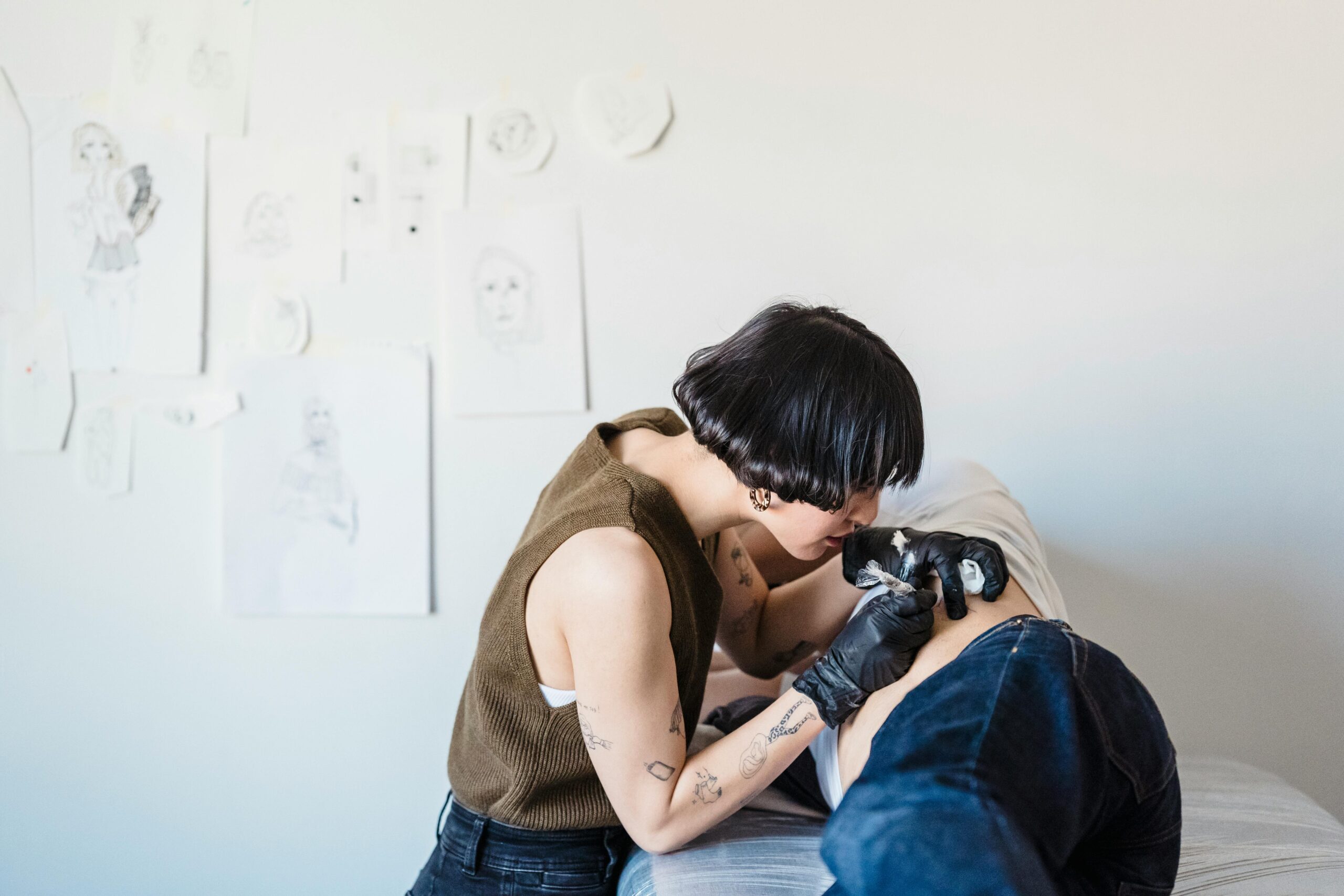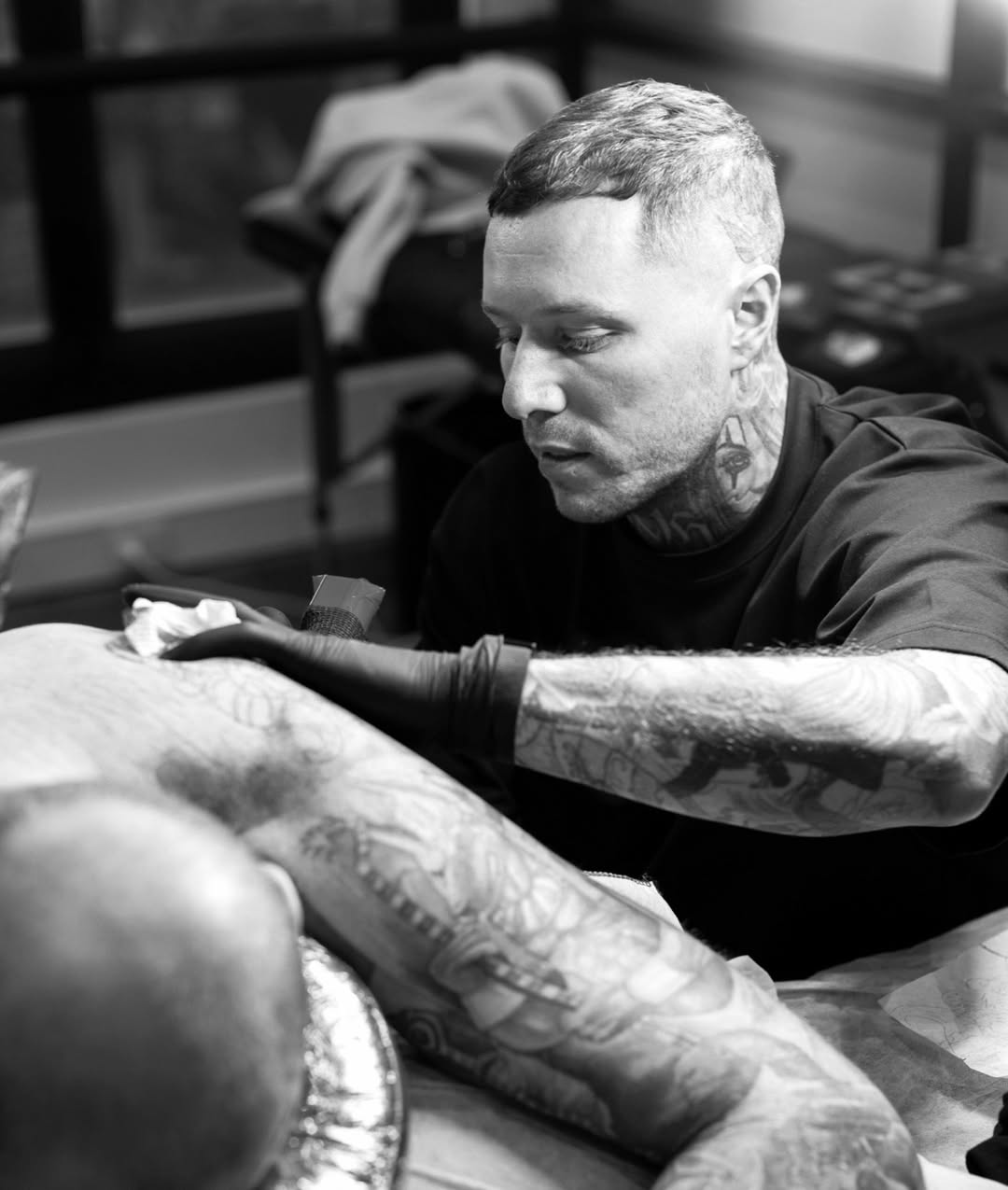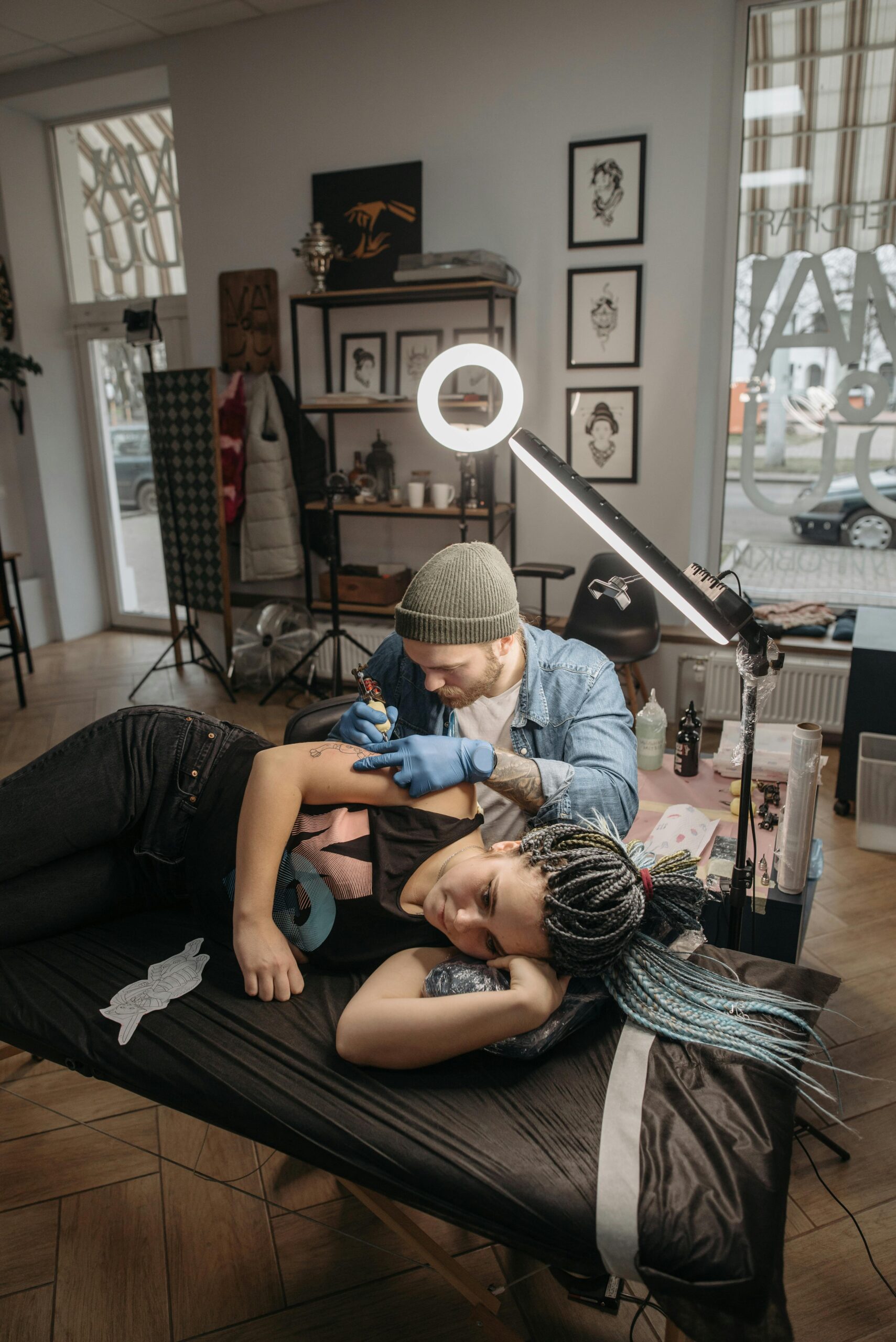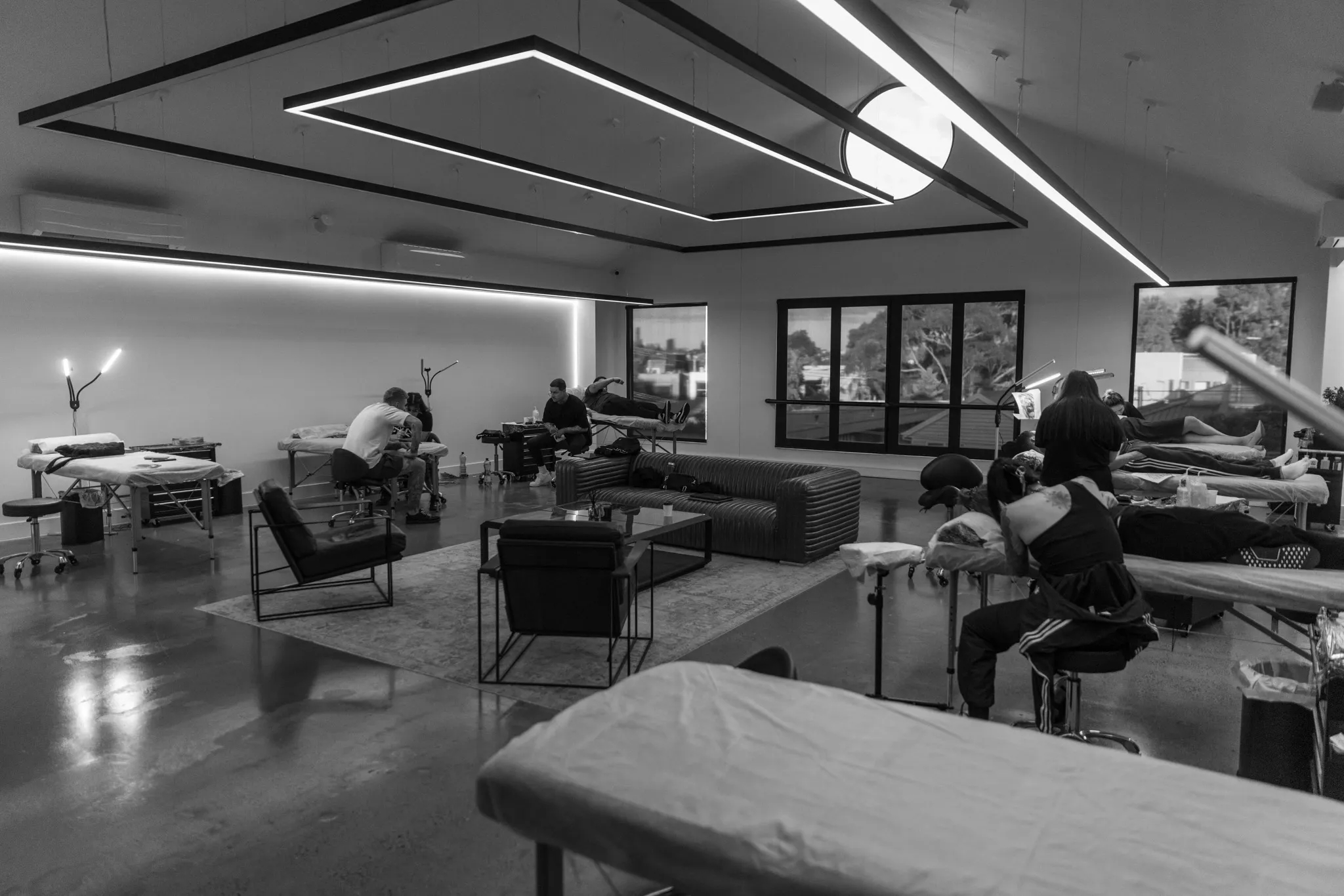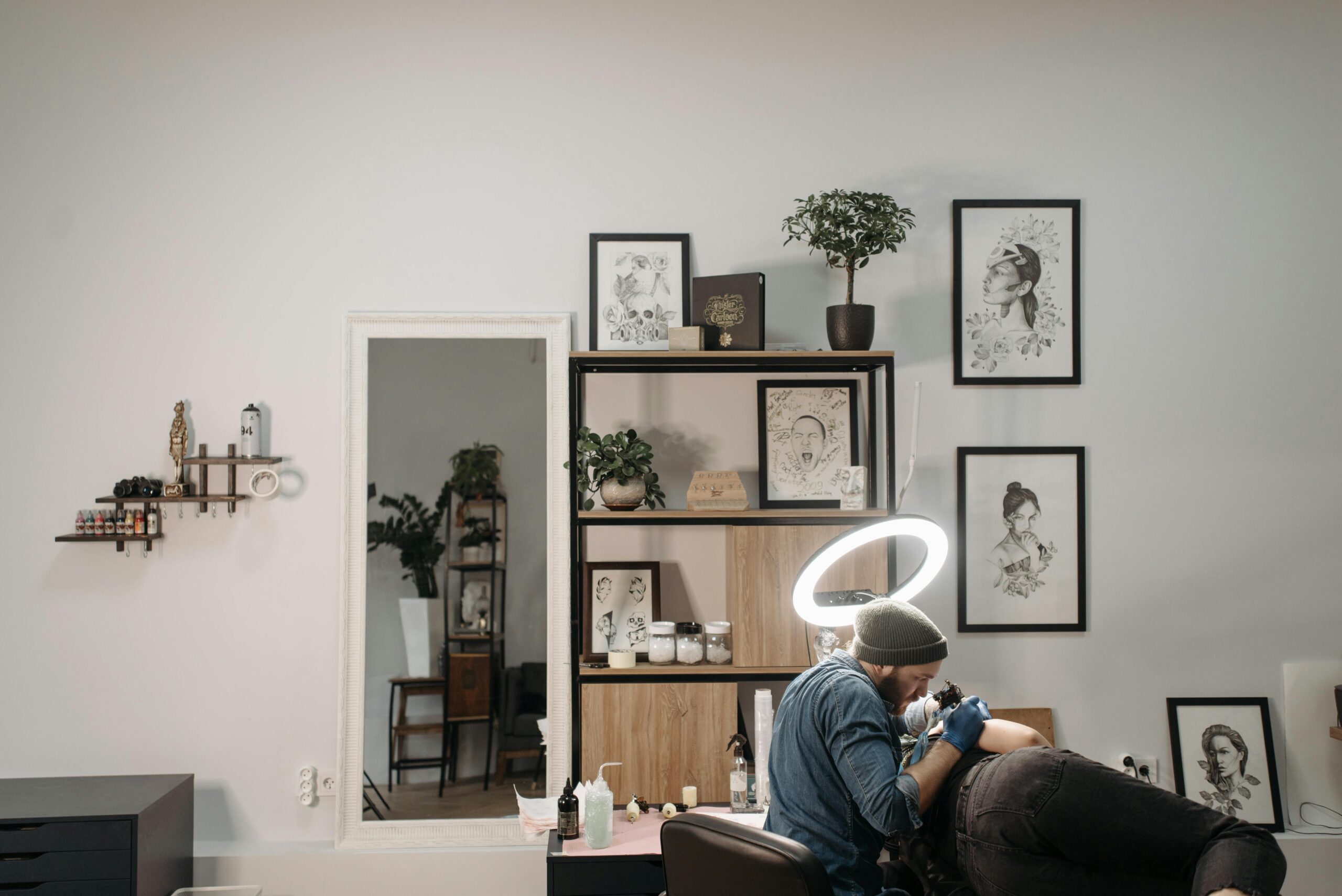Understanding realistic income expectations helps aspiring tattoo artists plan financially whilst building sustainable careers. This comprehensive guide breaks down actual Australian tattoo artist earnings across five years, covering startup costs, operating expenses, income progression strategies, and financial planning essentials—providing the honest information needed for informed career decisions.
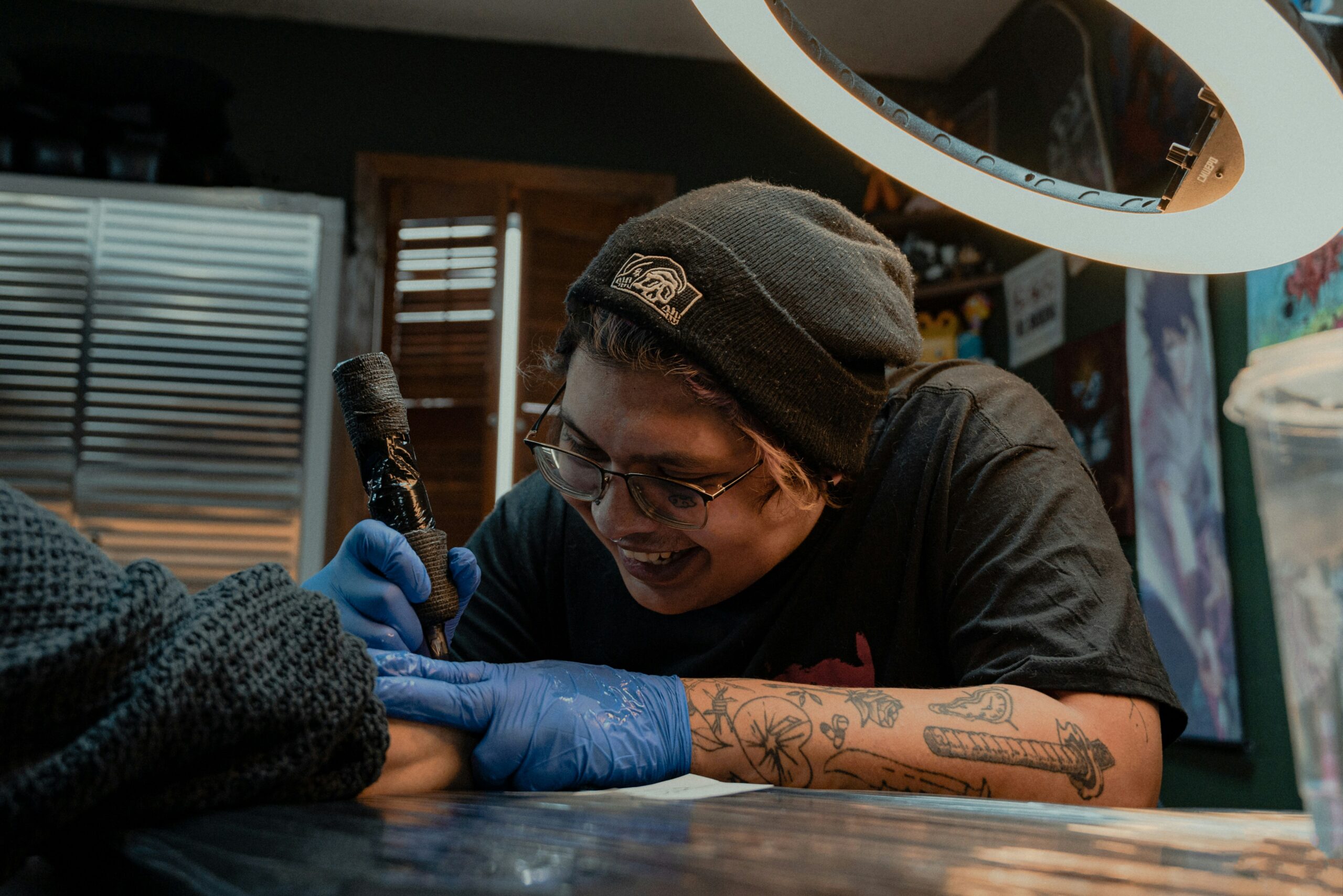
Why Income Transparency Matters for Career Planning
The tattoo industry often presents income information through two extremes: unrealistic promises of immediate six-figure earnings or discouraging warnings about impossible financial struggles. Reality sits between these extremes, with earnings depending heavily on location, specialisation, business skills, and strategic planning.
According to Australian Bureau of Statistics occupational data, personal service workers including tattoo artists show median annual earnings of $45,000-$65,000, though significant variation exists based on experience, location, and business model. Understanding realistic progressions prevents financial surprises whilst highlighting opportunities for above-average earnings through strategic career development.
Transparent income discussion serves multiple purposes: enabling realistic financial planning during training and early career phases, identifying income-limiting factors you can address strategically, setting achievable milestones measuring progress appropriately, and preventing premature career abandonment due to unrealistic expectations.
Financial success in tattooing requires both artistic excellence and business competence—technical skills alone don’t guarantee sustainable income without strategic pricing, marketing, and financial management.
Income Variables Affecting Earnings
Individual earnings vary dramatically based on controllable and uncontrollable factors:
Geographic Location: Metropolitan artists typically earn 30-50% more than regional counterparts, though lower regional expenses partially offset this difference. Sydney and Melbourne command premium pricing whilst smaller markets require volume-based strategies.
Specialisation: Fine line specialists, realism artists, and other technical specialties often charge 20-40% premiums over general work. Your specialised training directly impacts earning potential.
Business Model: Studio employees on commission earn differently than booth renters who control pricing and client relationships but bear all expenses. Independent studio owners face highest overhead but enjoy unlimited earning potential.
Working Hours: Full-time artists working 35-45 billable hours weekly earn substantially more than part-time practitioners, though burnout risks require balance.
Marketing Effectiveness: Artists skilled at social media marketing and client relationship building fill appointment books more consistently than those relying solely on walk-in traffic or studio-provided clients.
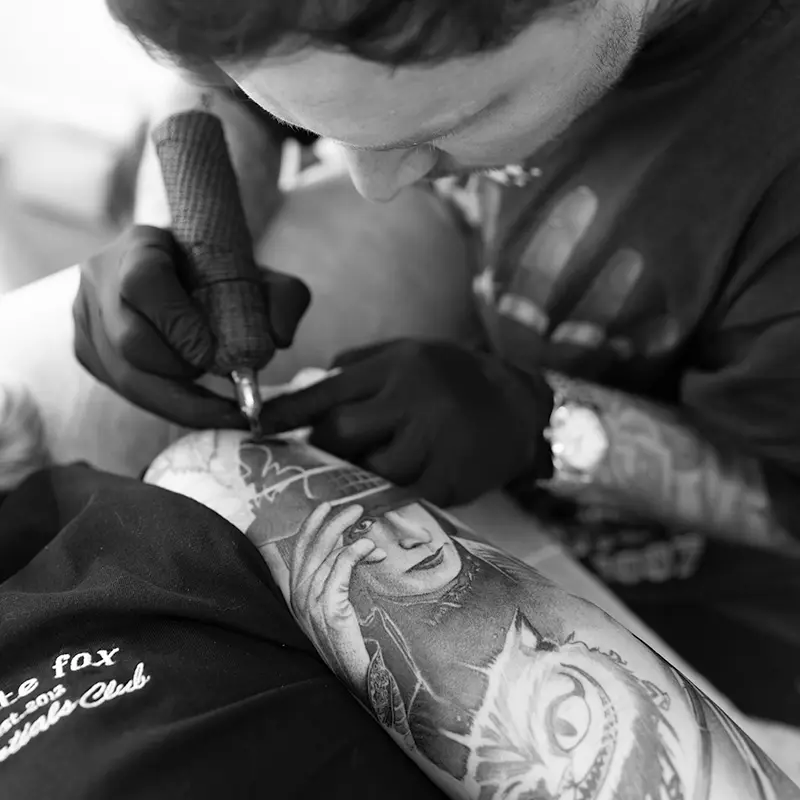
Year One: The Investment Phase ($20,000-$35,000)
First-year earnings typically disappoint new artists expecting immediate profitability. This investment phase focuses on skill development, portfolio building, and establishing initial client bases—financial success comes later for most practitioners.
Realistic First-Year Income Expectations
Most new artists earn $20,000-$35,000 during their first year, with significant variation based on entry path and startup strategy. This reflects part-time earnings while building skills and client bases, not full-time professional income.
Entry-Level Studio Positions: Working as junior artist in established studios typically provides most stable first-year income. You might earn 40-50% commission on your work, with studios booking clients you couldn’t attract independently. If completing 10-15 tattoos weekly at $150-300 each, 40% commission generates approximately $25,000-$35,000 annually.
Booth Rental Beginnings: Renting space in established studios provides independence but requires generating your own client flow. Weekly rent of $200-400 ($10,400-$20,800 annually) plus supplies ($3,000-$5,000) creates substantial overhead before personal income. Most booth renters struggle during year one, earning $15,000-$25,000 after expenses.
Independent Studio Launch: Opening your own studio requires substantial investment ($15,000-$30,000) in premises setup, equipment, marketing, and licensing. First-year profits rarely exceed $15,000-$20,000 after covering overhead, though you’re building equity in your business.
First-Year Expenses
Understanding expenses prevents financial surprises. Beyond living expenses, tattoo artists face significant professional costs:
Equipment and Supplies: Initial equipment investment ($2,000-$5,000) plus ongoing supplies (needles, inks, disposables, aftercare products) averaging $200-$400 monthly. Quality equipment proves essential—cheap alternatives cost more through replacement and compromised results.
Training and Education: Professional tattoo courses ($4,000-$6,000) represent significant investment but accelerate skill development dramatically compared to informal apprenticeships. Your comprehensive training investment pays dividends through faster client acquisition and premium pricing capability.
Licensing and Insurance: Business registration, health department approvals, public liability insurance, and professional indemnity coverage total $1,500-$3,000 annually depending on your state and business structure.
Marketing Expenses: Social media advertising, business cards, website hosting, and promotional materials require $1,000-$3,000 annually for effective market presence.
Workspace Costs: Whether studio rent, booth rental, or home studio setup, workspace expenses represent significant overhead requiring careful budgeting.
According to small business financial planning research, service businesses typically require 18-24 months reaching sustainable profitability—tattoo artists follow similar timelines.
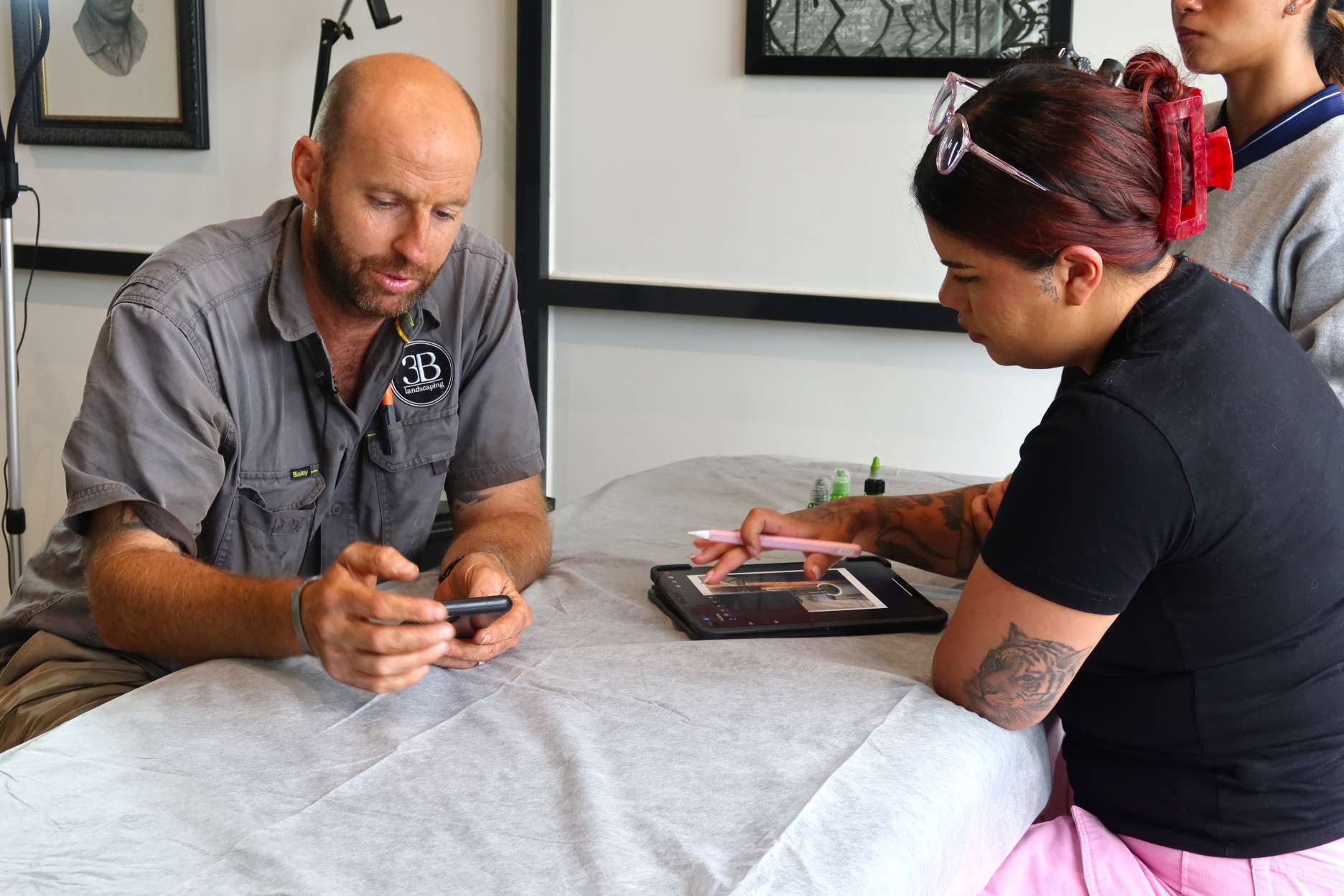
Year Two: The Growth Phase ($35,000-$55,000)
Year two brings income growth as skills improve, portfolios strengthen, and marketing efforts compound. Most artists reach financial sustainability during this phase, though earnings remain below long-term potential.
Income Progression Drivers
Several factors drive second-year income growth:
Improved Efficiency: Increased experience speeds execution time, allowing more client appointments weekly without compromising quality. What required 3 hours in year one might take 2 hours now, effectively increasing hourly earnings 50%.
Portfolio Credibility: Year two portfolios demonstrate consistency attracting clients willing to pay premium rates. Your work shows healed results and variety proving reliable capabilities.
Repeat Client Development: First-year clients return for additional work, generating income without marketing expenses. Client lifetime value dramatically improves business economics as relationships develop.
Pricing Increases: Improved skills and growing demand justify rate increases from $100-120 hourly toward $130-150, significantly boosting income without additional working hours.
Marketing Compound Effects: Social media presence built during year one gains momentum, with algorithm favouring established accounts and followers sharing your work organically.
Typical Year Two Earnings
Most second-year artists earn $35,000-$55,000, representing meaningful income growth from year one. Studio employees on commission might earn $40,000-$55,000 as client bases grow and efficiency improves. Booth renters typically reach $35,000-$50,000 as marketing efforts attract steady bookings covering overhead with margin remaining.
Independent studio owners often still earn modest personal income ($30,000-$45,000) as they reinvest profits into business growth, marketing, and facility improvements. However, they’re building business equity and establishing foundations for future premium earnings.
Financial Stability Strategies
Reaching financial stability requires strategic approaches beyond simply working more hours:
Implement Deposit Policies: Requiring deposits ($50-150) for all appointments dramatically reduces no-shows that devastate earnings. Deposits also provide cash flow stability managing business expenses predictably.
Develop Passive Income Streams: Retail aftercare product sales, flash design sales through print-on-demand services, or online educational content create income supplementing tattooing earnings.
Strategic Pricing: Gradually increase rates as demand grows, ensuring income grows proportionally to your developing skills and reputation.
Expense Management: Track all expenses meticulously, identifying areas for savings without compromising quality or professional presentation.
Your business development training accelerates reaching financial sustainability through strategic pricing and business management.
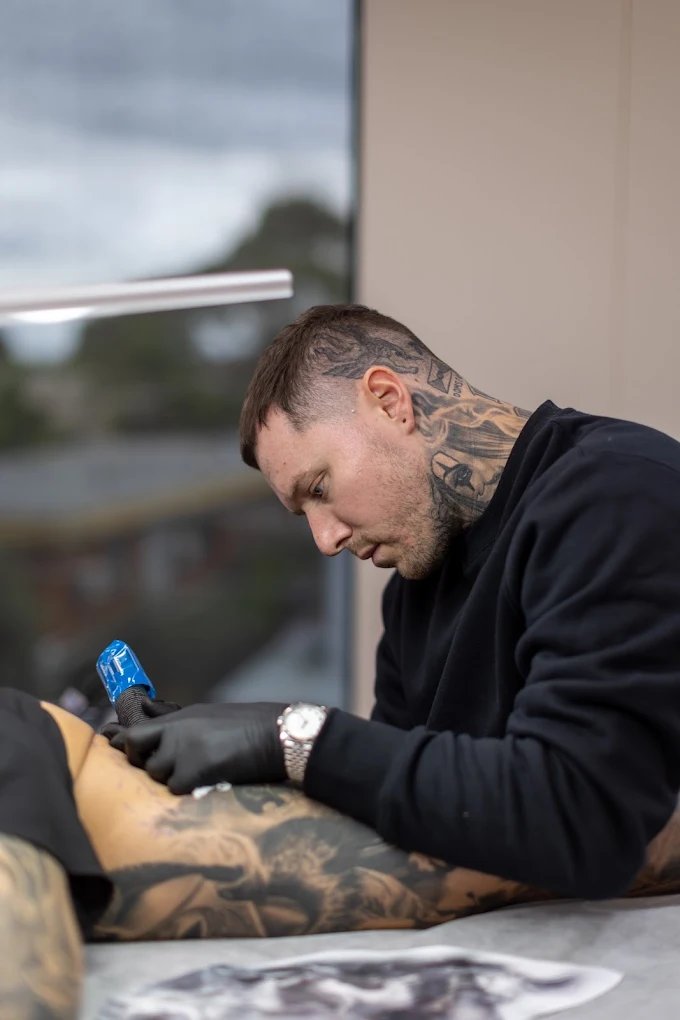
Year Three: The Professionalization Phase ($50,000-$75,000)
Year three typically represents transition from struggling practitioner to established professional enjoying sustainable income supporting comfortable lifestyle. This phase solidifies career viability and opens advanced growth opportunities.
Establishing Premium Positioning
Third-year artists with strong portfolios and marketing can command premium pricing positioning them above entry-level competition. Hourly rates reaching $150-200 reflect genuine expertise and market recognition.
Portfolio quality allows selectivity about projects accepted, focusing on work you enjoy and execute exceptionally whilst declining pieces outside your expertise or aesthetic preferences. This selectivity enhances reputation and satisfaction whilst maintaining income through premium pricing.
Many artists reach full booking capacity during year three, scheduling 2-4 weeks in advance consistently. This creates enviable position: stable income, client demand exceeding capacity, and leverage for rate increases.
Income Diversification
Established artists increasingly diversify income beyond direct tattooing:
Guest Artist Residencies: Working periodically in other cities builds new client bases and generates additional income through varied experiences. Many artists earn $3,000-$8,000 from 1-2 week guest spots.
Convention Participation: Tattoo conventions provide high-visibility opportunities earning $2,000-$10,000 from multi-day events whilst expanding industry networks.
Educational Content: Creating online tutorials, mentorship programs, or educational products generates income whilst establishing authority positioning.
Product Lines: Developing signature aftercare products, flash designs, or merchandise creates passive income supplementing active tattooing earnings.
Typical Year Three Earnings
Most third-year artists earn $50,000-$75,000, representing comfortable middle-class income in most Australian markets. Talented metropolitan artists with strong marketing might reach $80,000-$90,000 through premium pricing and full booking schedules.
Studio employees on commission typically earn $55,000-$70,000, with some exceeding this through high productivity and client loyalty. Booth renters controlling their pricing and client relationships often earn $50,000-$75,000 after expenses. Independent studio owners might earn $45,000-$65,000 personally whilst building business value and potentially employing junior artists generating additional revenue.
According to creative industry income research, year three typically represents the career viability inflection point where artists either establish sustainable practices or exit the industry.
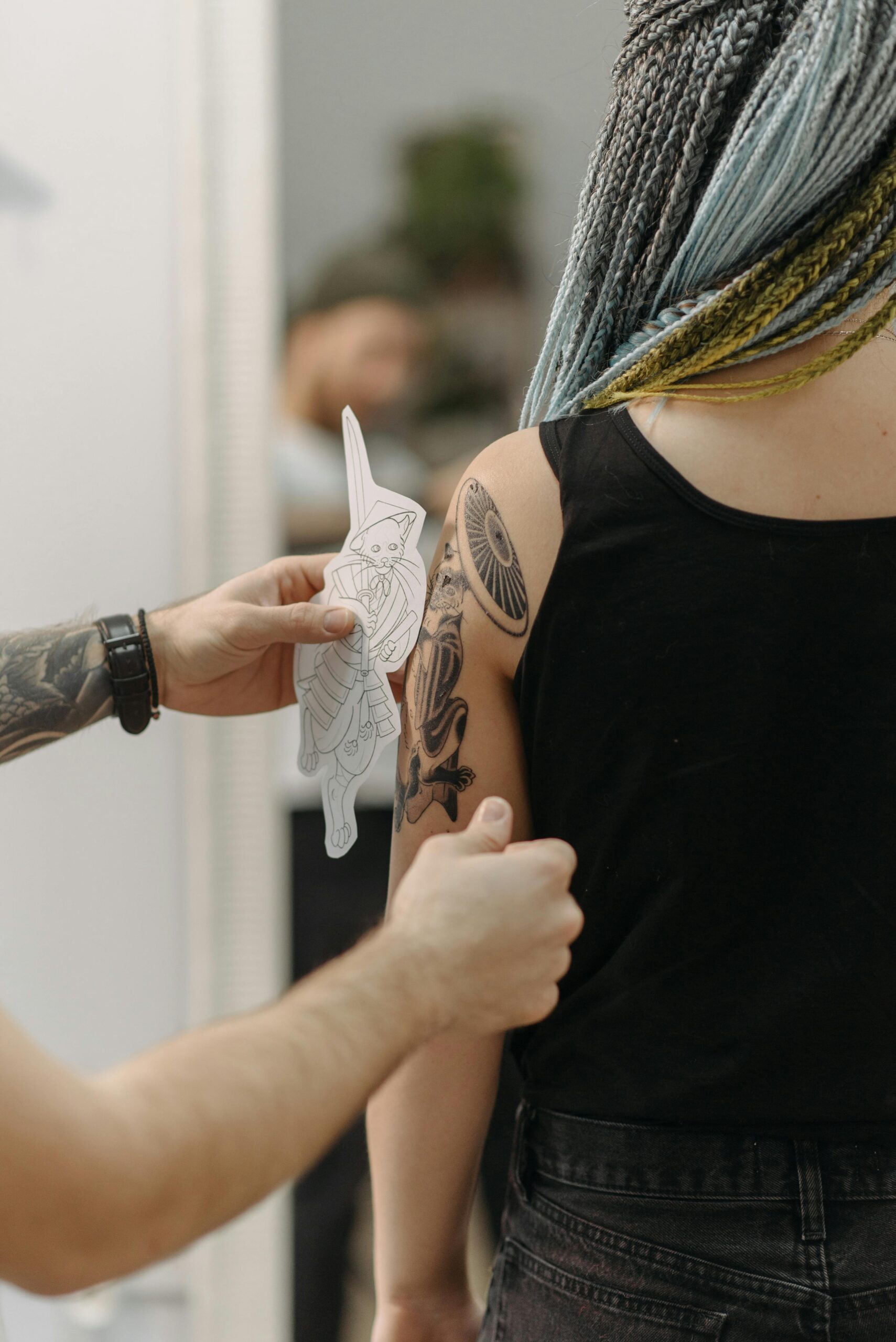
Year Four: The Optimization Phase ($65,000-$95,000)
Fourth-year artists enjoying strong reputations focus on optimizing business operations for maximum profitability whilst maintaining work-life balance preventing burnout.
Strategic Capacity Management
By year four, most successful artists face capacity limitations—only so many hours exist for hands-on tattooing. Growth strategies shift from working more hours toward earning more per hour through:
Premium Pricing: Rates reaching $180-250 hourly reflect established expertise and market demand, allowing comfortable income without exhausting hours.
Minimum Charge Increases: Raising minimums from $100-150 toward $150-250 ensures even small pieces compensate appropriately for setup time and professional overhead.
Selective Client Acceptance: Focusing on work you excel at and enjoy creates portfolio consistency whilst preventing burnout from unwanted projects.
Efficiency Improvements: Streamlined processes, better equipment, and refined techniques allow more client work in fewer hours without sacrificing quality.
Business Model Evolution
Many fourth-year artists evolve business models for improved profitability:
Studio Ownership Expansion: Successful studio owners often hire junior artists, earning commission on others’ work whilst focusing on premium custom projects personally.
Booth Rental Communities: Some artists develop shared spaces where they control client relationships and scheduling whilst sharing overhead costs with complementary artists.
Hybrid Models: Mixing studio employment (providing stable base income) with guest residencies and convention work (generating premium earnings and variety).
Typical Year Four Earnings
Fourth-year artists typically earn $65,000-$95,000, with top performers in metropolitan markets potentially exceeding $100,000. This represents comfortable income supporting mortgages, families, and savings goals.
Established specialists in high-demand styles (fine line, realism, Japanese traditional) often command premium pricing generating $80,000-$110,000 from 30-35 billable hours weekly. Studio owners managing successful operations whilst tattooing personally might earn $70,000-$100,000+ combining direct earnings with business profits.
Regional artists with strong online marketing filling books through social media rather than walk-in traffic can earn $60,000-$85,000 whilst enjoying lower living costs than metropolitan counterparts.
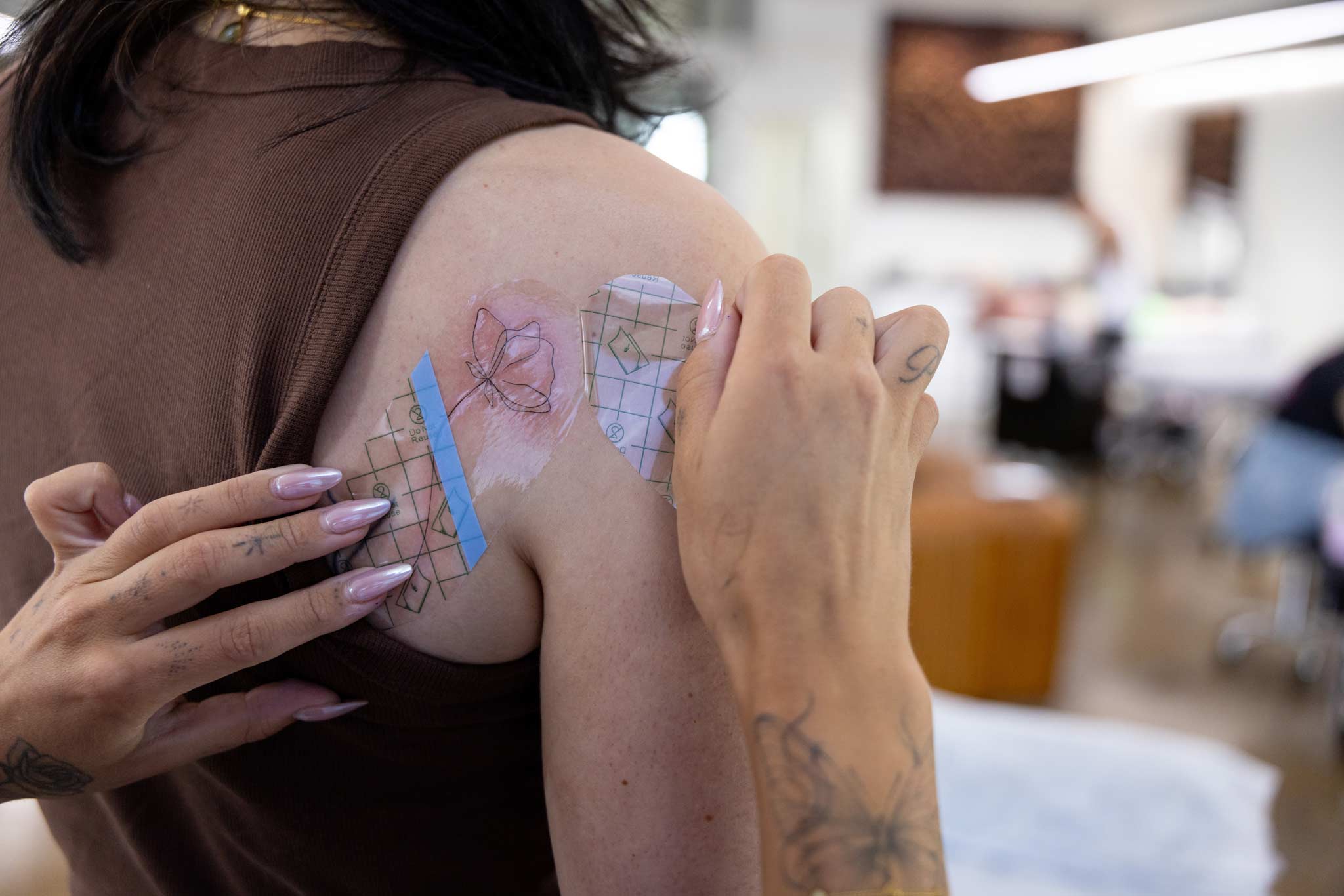
Year Five: The Mastery Phase ($80,000-$120,000+)
Fifth-year artists demonstrating consistent excellence and strategic business management often achieve six-figure earnings placing them in upper income brackets whilst maintaining creative satisfaction.
Premium Market Positioning
Five years establishes genuine expertise justifying premium positioning. Artists at this level might charge $200-300+ hourly, work exclusively on large custom pieces (minimum $1,000-$2,000), and maintain months-long waiting lists demonstrating exceptional demand.
Portfolio quality attracts clients specifically seeking your work, willing to wait and pay premium prices for your specific artistic vision. This positioning allows creative freedom rare in earlier career phases.
Many fifth-year artists develop signature styles becoming synonymous with specific aesthetics, attracting international clients and industry recognition positioning them as authorities in their specializations.
Business Leverage and Scale
Experienced artists increasingly leverage their expertise through multiple income streams:
Studio Ownership with Team: Successful studio owners employing 2-5 artists might personally earn $80,000-$100,000 from tattooing whilst generating additional $40,000-$80,000 through commission on employees’ work.
Educational Products: Creating online tattoo courses, mentorship programs, or educational content generates substantial passive income. Successful educators earn $20,000-$60,000 annually supplementing active tattooing.
Brand Partnerships: Established artists often partner with equipment manufacturers, ink brands, or aftercare companies, earning through sponsorships, product endorsements, or signature product lines.
Convention Appearances: Premium artists command appearance fees for convention attendance beyond tattooing income, earning $5,000-$15,000 per event.
Typical Year Five Earnings
Fifth-year artists with strategic business management typically earn $80,000-$120,000+, with exceptional performers exceeding $150,000 in high-cost metropolitan markets or through diversified income streams.
Solo practitioners might earn $90,000-$130,000 through premium pricing ($200-300 hourly), selective client acceptance, and strategic capacity management maximizing profitability per working hour.
Studio owners successfully managing growing businesses whilst maintaining personal tattooing practices often earn $100,000-$180,000+ combining direct earnings with business profits.
According to IBISWorld’s tattoo industry revenue analysis, top-performing tattoo artists consistently rank among highest-earning service professionals in Australia.
Financial Planning for Tattoo Career Success
Sustainable financial success requires strategic planning beyond simply improving technical skills.
Tax and Superannuation Considerations
Tattoo artists operating as sole traders or contractors bear responsibility for tax planning and retirement savings that employees enjoy automatically:
Quarterly Tax Provisions: Set aside 25-30% of earnings for tax obligations, preventing year-end surprises. Consider Pay As You Go installments smoothing tax payments throughout the year.
Superannuation Contributions: Make voluntary super contributions (minimum 11% of earnings recommended) ensuring retirement security despite self-employment status.
Deduction Optimization: Track all business expenses meticulously, maximizing legitimate deductions: equipment, supplies, home office portions, vehicle usage, continuing education, and professional memberships.
Professional Accounting: Engage qualified accountants specializing in small business, ensuring tax compliance whilst optimizing financial structure. Annual accounting costs ($1,500-$3,000) typically save multiples through proper deduction identification and tax planning.
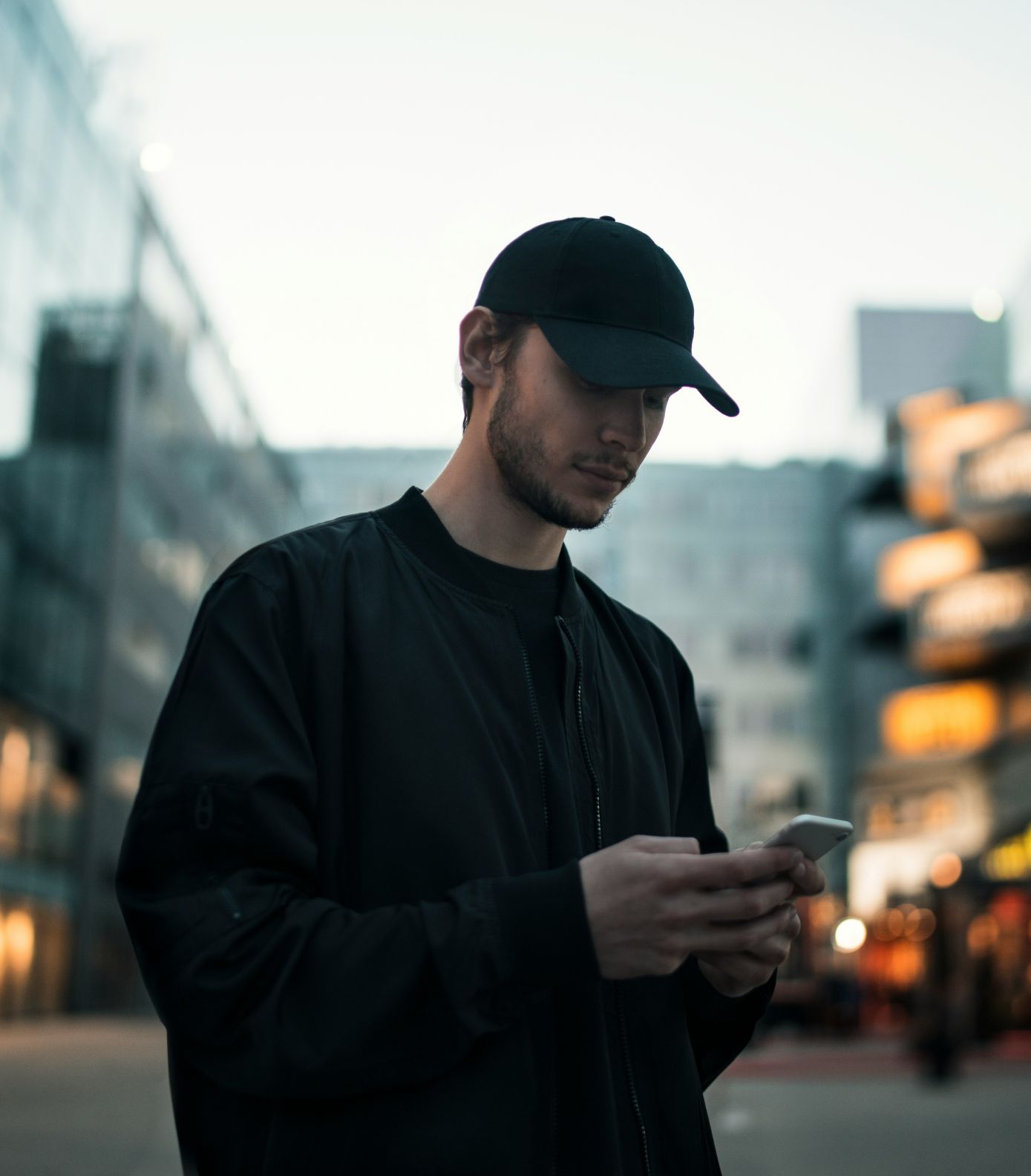
Building Financial Resilience
Income volatility requires financial buffers protecting against slow periods or unexpected expenses:
Emergency Funds: Maintain 3-6 months expenses in accessible savings accounts, protecting against illness, injury, or market downturns affecting bookings.
Income Protection Insurance: Consider insurance replacing income if injury or illness prevents tattooing. Premiums ($50-150 monthly) provide essential security for self-employed practitioners.
Diversified Income Streams: Multiple revenue sources (tattooing, educational content, retail sales, guest residencies) protect against fluctuations in any single area.
Professional Development Investment: Continuous skill development through workshops, advanced training, and artistic exploration maintains competitive positioning and premium pricing capability.
Your comprehensive business training prepares you for financial management realities beyond artistic skill development.
Beyond Year Five: Long-Term Career Trajectories
Successful five-year artists face choices about future directions, each offering different income potential and lifestyle implications:
Solo Premium Artist: Continue refining craft and building reputation, potentially earning $120,000-$200,000+ through premium pricing and selective client acceptance whilst maintaining complete creative control.
Studio Owner/Employer: Scale business through hiring and training junior artists, building enterprise value whilst earning $150,000-$300,000+ through combined tattooing and business profits.
Industry Educator: Transition partially or fully into education through workshops, online tattoo courses, or formal training programs, earning $80,000-$150,000+ whilst reducing physical demands of constant tattooing.
Brand Developer: Leverage reputation building product lines, signature tools, or industry-related businesses, potentially earning $200,000+ through diversified entrepreneurship.
Each path requires different skills and offers distinct advantages—successful artists consciously choose directions aligning with personal goals rather than defaulting to continuation of initial approaches.
Professional Training Accelerates Income Growth
Income progression depends heavily on skill development speed and business competence. Professional training dramatically accelerates reaching higher income tiers compared to informal learning approaches.
At Omnia Tattoo Academy, our comprehensive tattoo courses include business development modules covering pricing strategies, financial planning, marketing approaches, and income optimization—ensuring business success matches your artistic development. You’ll learn realistic income expectations whilst developing strategies for above-average earnings through specialization and strategic career management.
Our experienced tutors provide personalized guidance on financial planning specific to Australian market realities, helping you avoid common financial pitfalls whilst building sustainable income. With six-day weekly support, you’ll receive advice addressing specific financial questions as you build your practice.
Build Your Profitable Tattoo Career
Ready to build a financially sustainable tattoo career with realistic expectations and strategic income growth? Our comprehensive tattoo courses provide technical skills, business training, and financial planning knowledge—everything you need for above-average earnings and long-term success.
Join Australian artists who’ve built thriving, financially rewarding practices through Omnia’s proven training methodology. With flexible payment plans starting at $30 per week, professional equipment included, and comprehensive business and financial training, you’ll establish foundations for career success and financial security.
Explore our tattoo course options today and start building the profitable tattoo career you deserve.
